“Why are those leaves on the pistache tree yellow?” asked my three-year old son.
“Soon they’ll all be yellow — and orange and red — and then they’ll fall. That’s why they call this time of year Fall.”
Truth is, in Southern California it’s mostly the leaves of non-native trees like the Chinese pistache that turn colors and fall. We’re more of an evergreen climate, naturally speaking. Yes, sycamores and alders lose their leaves, but live oaks and sumacs and sages and buckwheat and ceanothus and toyons and most of the rest of the vegetation that cover our hills don’t.
The feeling that October has for me is warm afternoons and crisp mornings. Hour for hour, it’s among the most pleasant months to spend in the yard.
And in October is almost always the arrival of our first precipitation after the long, dry summer. Often it’s a single, inconsequential sprinkle, like the one we got on October 4, 2018; sometimes it’s a real storm that dampens Halloween trick-or-treating, like the one in 2014.
Our first Santa Anas almost always arrive this month too. They go hand in hand with our rainy season, visiting us from time to time between storms through the winter. If you’re new to the area, Santa Anas are winds that blow from the northeast, from the desert out toward the ocean. Surfers here love them because they make the waves hollow and easy for barrel riding.
Gardeners, not so much. Santa Anas are dry winds, so they require that we keep a close eye on the water needs of our plants, and furthermore, Santa Anas can be strong enough to snap limbs off trees and knock fruit down. Just as with a summer heat wave, the best strategy for mitigating the effects of a Santa Ana spell, I’ve found, is a pre-emptive irrigation. Plants with a reservoir of moisture in the soil can best face the winds, low humidity, and warmth that come with Santa Anas.
(More on this in my post, “Santa Ana winds and your garden.”)
And how else do we garden in October?
Among the vegetables, we:
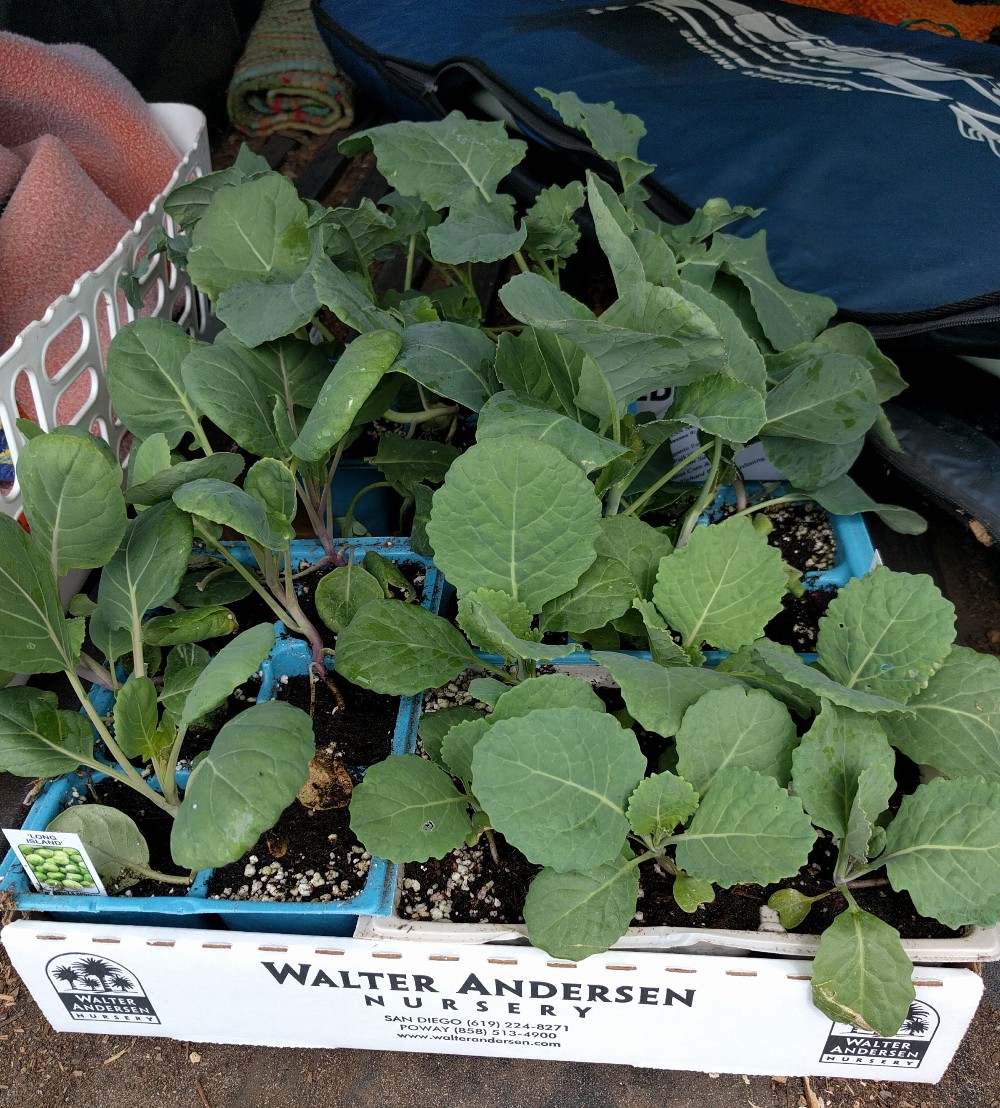
– Sow seeds or plant seedlings of beets, brassicas (broccoli, brussels sprouts, cabbage, cauliflower, kohlrabi), carrots, garlic, greens (chard, collards, kale, mustard, spinach), lettuce, onion, parsnips, peas, radish, turnips, parsley, cilantro
– Onions are best sown later in the month, as they’re more likely to bolt if sown earliers; see “Why do onions flower?”
– As you plant your vegetables, do note the shadows being cast by trees, walls, and buildings because this time of year they get long and will slow down the growth of anything in their shade
– Remove tomato plants? Remove cucumbers? There’s a balance now to be found between keeping the summer plants going and making room for fall plants. It can be an awkward time, especially if garden space is at a premium. The only summer plants I leave in the ground in October are healthy ones, first and foremost. So if that cucumber vine is covered in powdery mildew, it’s out. I also only leave plants that will continue to produce or mature before it really cools down next month.
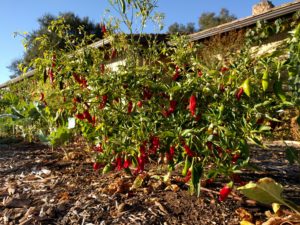
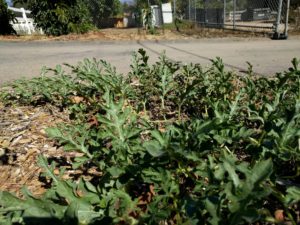
– Add a cover to the soil; I add some compost or wood chips around now every year, around the time I plant fall vegetables. If you’re not growing vegetables this fall and winter, add some compost or manure or wood chips to the surface of your garden and let the winter rains help make the soil below into a magic medium for the spring’s crops
(See my post, “Fertile soil can be child’s play.”)
– Eat these vegetables in October (had you planted them): tomatoes, tomatillos, beets, peppers, eggplant, squash, basil, cucumber, melons, beans, corn, greens, sweet potatoes
Among the fruits and berries, we:
– Plant new trees? I’d wait for the bare-root season in January for deciduous fruit trees, but now is a fine time to plan to plant those; and it is a fine time to actually plant macadamias, citrus, and avocados
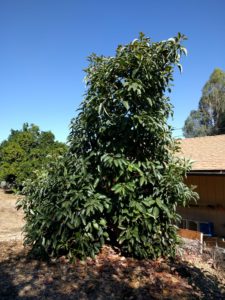
– Eat these fruits and berries: passion fruit, raspberries, apples (late Gala, Fuji, and early Pink Lady and Granny Smith), figs, pomegranates, jujubes, and late-season avocados (Gwen, Lamb, Reed, Nimlioh) as well as the earliest avocado varieties (Mexicola, Mexicola Grande)

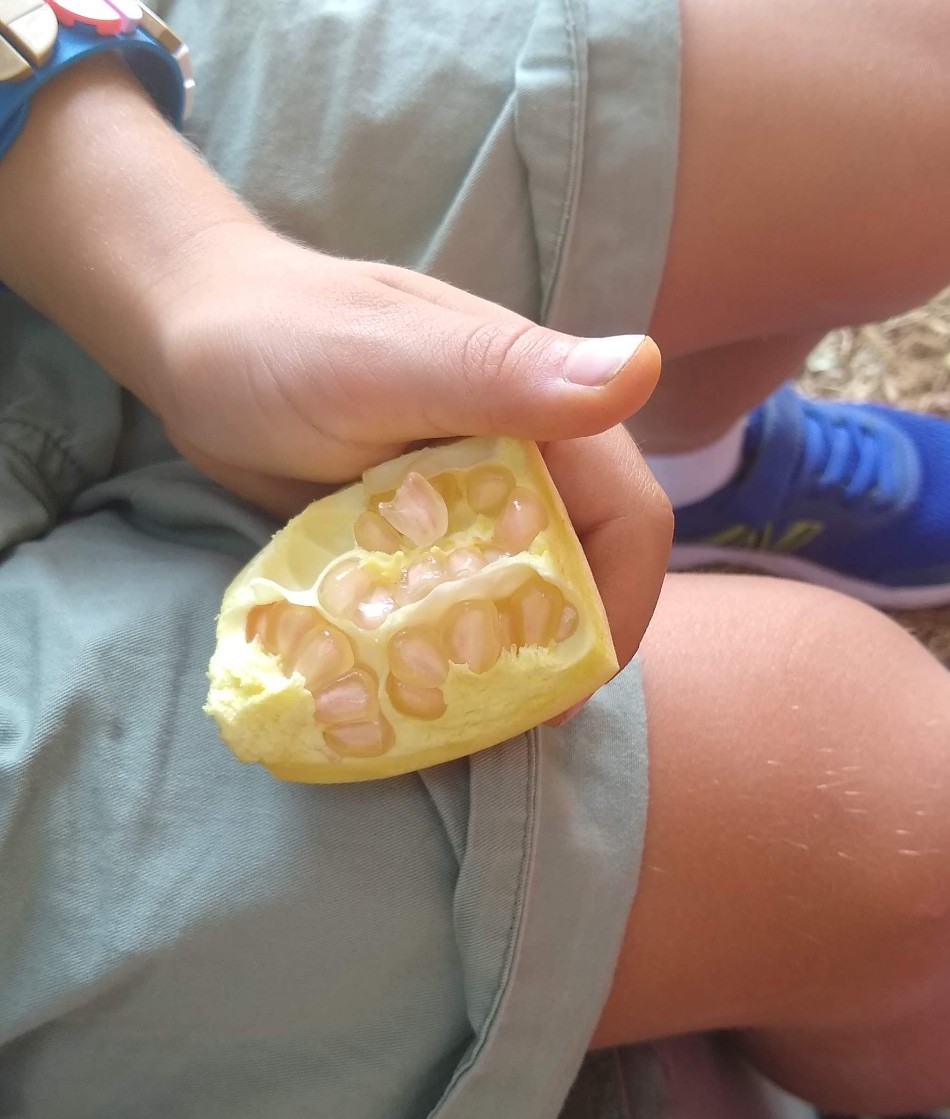
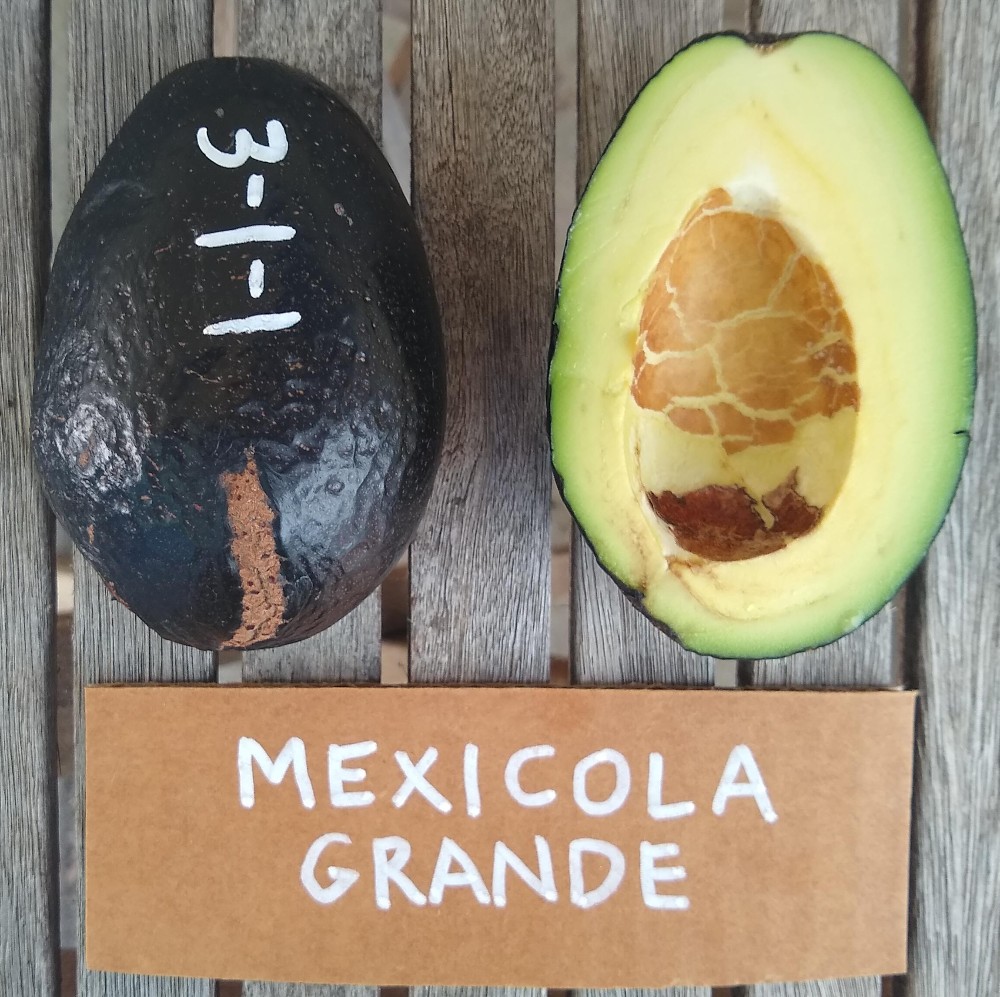
Miscellaneous
– Take some notes about summer before everything is forgotten. How did you water, and how would you like to water differently next summer? Which varieties of vegetables did you like or not like? When did you plant this or that, and how did those plants fare? Were plant spacings in the garden good? Was there a harvest gap where, for example, you had no fresh tomatoes?
– Speaking of tomatoes, I freeze mine when I have extras
October in our yard ends with an uncommon treat on Halloween. My kids do the costume and candy thing, of course, but they also know that Halloween is the day they’re allowed to begin picking the Kishus. Kishu mandarins are their favorite among the dozens of fruit trees in the yard.
Here are the Kishus in mid-October of 2017, just fading from green to orange. Not quite ready.

All of my Yard Posts are listed HERE
Thank you for your support of my work here at The Yard Posts

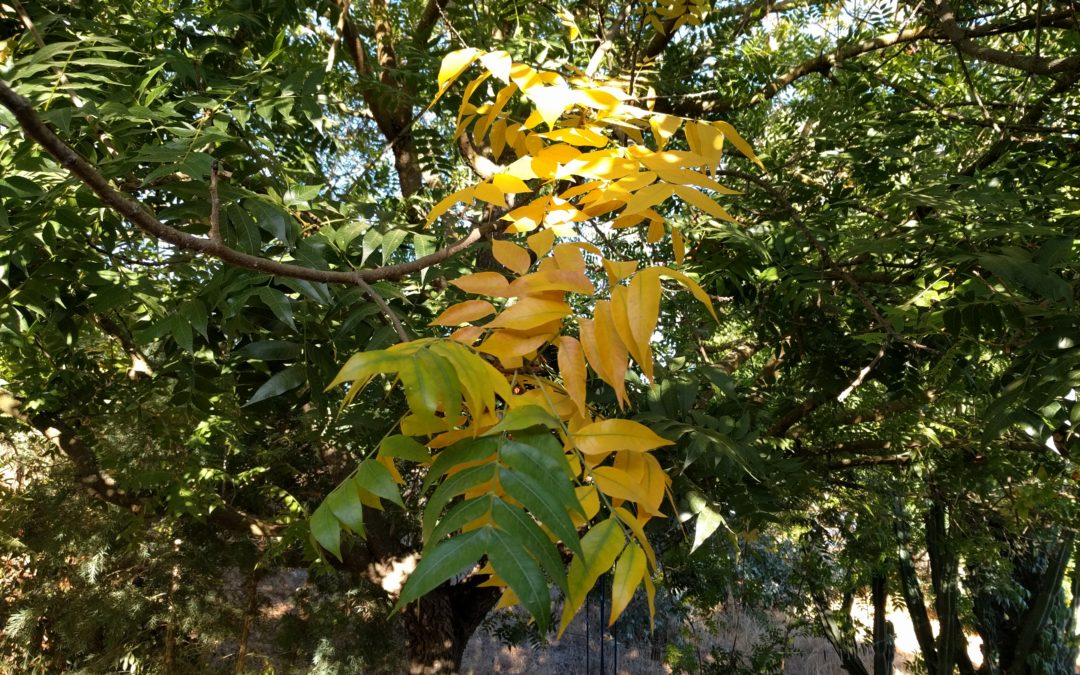


Hi Greg,
After 12 years in an apartment, Im finally in a home with a huge backyard. Im not new to gardening, but its been a while, and now i have so many more options!! I have already started my compost pile. With all this October heat and my excitement, I’m searching for vegetables to plant now. My backyard is 90% sun in the mornings till about 3 pm or so , and i have 2 smaller shade areas. I am trying to specifically read what veggies like full sun/part shade for optimum results. Thank you
that was me 3 years ago, finally starting to bear some fruit (literally) but lots of disappointments along the way, get busy the more things you try to grow the more chances something good will help outweigh all the stuff that doesn’t work out your way
Congratulations on your new backyard. It must be a thrilling change.
It depends a bit on where you live because the sun is stronger in some places than others (the farther from the beach, the stronger the sun usually), but in general for Southern California, vegetables love as much sun as you can provide.
A good rule of thumb is that vegetables whose leaves you eat can do well with less sun than vegetables whose fruit you eat. For example, lettuce can grow well with less sun than tomatoes; chard can grow well in less sun than squash. I used to garden in a very shady yard, so let me know if you want more details about what I discovered while gardening there.
I sure HOPE you are right about planting avos in Oct, planted two last Oct. from Atkins, the #15 Reed failed, the #15 Pinkerton took off like a rocket and has grown 8 feet!. Just planted #15 Reed, my 4th attemmpt to get one to grow, and a beautiful 7 foot #15 Stewart. Does/will the Garden Calendar contain info on avos? Thanks for all the great garden information! You’re the Best.?
Hi Frank,
October is great for people who live where frost is rare. October is good for people like you and me who live inland and may have to protect the little trees in the coming winter. But for 15-gallon trees, the risk is less than for 5-gallons or sleeves.
By chance, have you planted these Reeds in different locations? (I’ve noticed that there are a couple of dead spots in my yard where multiple trees have died or struggled.)
I put a little avocado info in the gardening calendar, but not much. My plan is to also make available a dedicated avocado calendar for 2021 too, but I probably won’t have it ready for purchase until late November. (But there’s a chance I’ll get disciplined and find some time to get it done sooner!) Thanks, Frank!
The first Reed, I planted wrong, used steer manuer and watered wrong. #2 from Atkins was just 8 feet from the Pinkerton, looked good but never grew, dug up and had some root issue, #3 was a #5 size, but not so good looking tree from the get go, planted in a different area, never took hold, #4 is from Durling, looks good, has just begun to throw out some new growth, planted correctly in a new area with lots of course mulch, often shallow water, good drainage. Never give up! If I’d discovered you sooner, I’d not have killed 4 or 5 avos !
Hi Greg; I hope the 2024 Calendar is all about Avocados’s!!!! Hint, hint…..
Cant wait to see your preview, when your not out playing !!
I’m working on a new Avocado Calendar for 2024, Joe. I’ve got photos selected, and the information is ready. It’s time for layout now.
These last 2 days have been the nicest weather I can remember in some time. The breeze is wonderful.
The last heat way we had with the 4 days of 100f weather really cooked some of my plants, I didn’t take it as seriously as when it hit 113 and I shade protected and brought in a lot of my plants. I left everything out and uncovered thinking 100f isn’t going to be so bad and it killed my seedling 2 year Hass and did lots of heat damage to my raised bed Hass and a bunch of new seedling vegetables I was growing.
But yes the weather now is so very nice…
Sorry to hear, Zen. I too haven’t taken these October heat waves as seriously as I should have and received some damage because of it, but mostly to weak or old plants. Can’t wait for the real October to settle in!
I lost almost all of a small Sharwil to the heat. This was the first year it set fruit, which probably further stressed it. It has not grown much at all since I put in ground several years ago. I may just try to put a Sharwil or Green Gold branch on the Reed next to it (which had no damage to speak of) and call it good.
I pulled out my raised bed Hass, it just slowly died back and now there’s a third of the original tree left with one branch that is trying to push out new leaves but they are sickly looking. Replaced it with a 5g Pinkerton and this time I didn’t botch the transplant so let’s see how we do. Hass is now in a container and we’ll see if it recovers but I doubt it.
Hello Greg,
May I know more about gardening in a shady yard? I just started gardening this year and I’ve committed to gardening in earnest. I purchased &installed two raised garden beds (cedar 4x4x11). The location of the two raised garden beds has varying sun exposure: 6 hours of full sun on one bed while the other bed has only 4 hours of sun > so I consider this a shady yard. I have not planted anything yet to both raised beds but would like to learn more from your first-hand experience. There’s tons of information about gardening in So. California but very general and quite overwhelming. Looking forward to hearing from you. Many thanks in advance.
Hi Coco,
I gardened in a shady yard for four years before moving to my current location. Your bed in six hours of full sun should do well, but the one in four hours will likely have less growth and productivity.
Some plants that do best in the most sun include large-fruited tomatoes, corn, melons, and squash. I’d put those in your sunnier bed.
Some plants that do okay in less sun include lettuce, chard, kale, and other greens. Also, in my shady yard I got acceptable results from onions, garlic, broccoli, potatoes, and beans.
Finally, you’ll be able to make the most of the sun that the beds get by being careful about the timing of your plantings. Plant the cool season vegetables (listed in the post above) as soon as possible, before the days get too short. Ideally, you would have planted these in mid or late September even.
And then when it comes time to plant warm season vegetables, get them all in between about April 1 and May 15. The days will be very long going toward the June 20 solstice and the plants will grow maximally in their early days.
See my April post about which vegetables to plant then: https://gregalder.com/yardposts/what-to-do-in-a-southern-california-garden-in-april/
You’re going to get more of a few problems on your vegetables, such as powdery mildew, compared to a sunnier location. There’s nothing you can do about that. (Even today, I have some zinnia flowers among my vegetables in full sun that look perfect, and then I have some other zinnias near the east side of my house that only get about four hours of sun and they have powdery mildew.) But don’t take it to heart, and never expect quite the growth and yields that others with sunnier locations can get, and enjoy the produce that comes!
By the way, there is a photo of my previous shady garden in this post: https://gregalder.com/yardposts/starting-a-vegetable-garden-in-southern-california/
Hi Greg! I’ve discovered a few grubs in my raised bed and they are eating my newly planted spinach. At least I think they are the culprits since I have a fine net covering the bed. Do you have any advice on how to control them without using pesticides or buying a few chickens? Thanks and be well!
Hi Nancy,
I’ve been finding grubs while transplanting seedlings lately. I’ve never noticed them doing damage to plants though. Which parts of the spinach plants have been eaten in your garden?
I had a strange experience with a small Hass avocado. I had been periodically spraying it with a weak concentration of urea (nitrogen). It bloomed in October! Flowers still opening. Will see if the flowers take.
Hi Randy,
It’s acting like Carmen. Let us know if any fruit sets.
Greg, Could not figure out why my tomatoes and eggplants did so poorly this season, apparently, the guy who removed two bougainvilleas last year used gas and stump killer to finish the job (grrr). Next time will ask how they are going to do the job. Anyways, what might I do to restore the soil (besides digging it out and replacing new soil) so it is ready for next summer?
Thanks
Hi Ajey,
I don’t know of another option, unfortunately. I’ve got a couple of dead spots in my yard where many different kinds of fruit trees have died within two years of planting and I suspect something like motor oil was dumped in those spots by the previous owners.
I would love to see a post on growing apples. I moved to SIMI VALLEY a few years ago and there are two apple trees in my yard. I think they are Fuji. I had a lot of apples the first year and they have decreased every year. This year I got more than the last two, but the apples are smaller and skin is tougher. I fertilize and water, but maybe I am not doing enough. Do apple trees age out? I don’t know how old they are.
Hi Vickie,
I’ve seen very old apple trees still producing a lot of big apples. In fact, my great great grandfather planted one at his place in the Los Angeles area in the 1930’s or 1940’s, and it still makes many, large apples (that don’t taste very good, unfortunately).
That said, my grandparents had an apple tree planted in the 1970’s that I ate from all my youth, but it eventually declined and they removed it about five years ago.
I have noticed that my apples want more water than the other deciduous fruit trees that I grow near mine (apricots, pluots, peaches). Yet! I’ve also seen happy and productive older apple trees in abandoned locations near my place getting zero irrigation. This might be partly due to rootstock, not to mention soil depth and other factors.
Nonetheless, I would say that it’s generally helpful for apples in Southern California that they be given ample water and have their fruit load thinned in order to make quality, large apples. (My practice is to thin each cluster to one or sometimes two fruit.)
Hi Greg, Kind of off the subject but My husband hired some tree trimmers that were working next door to remove all the Ivy from our block wall. While they were here they told him the lemonade lemon tree and the avocado need to be thinned and topped to allow more air flow through them. Our avocado tree is loaded with fruit right now and we usually don’t start picking it till the end of October through January. My concern is if they vigorously thin it and top it will this put the tree in shock or damage it. The tree is 18 feet. wide and 22 feet tall (yes it does need topped). What is your oppion recommendation. I would like to send you pictures but not sure how. Now the Lemonade is a prolific producer year round pretty much any suggestion there?